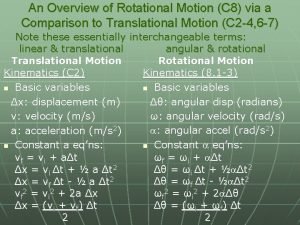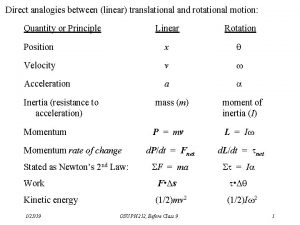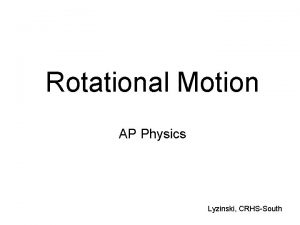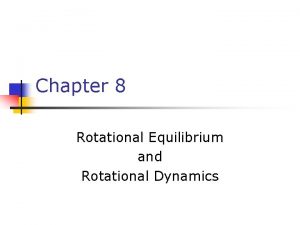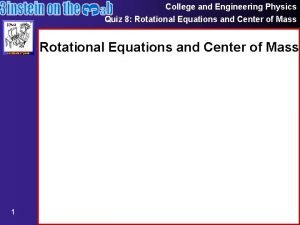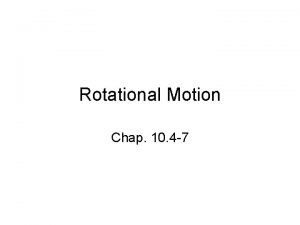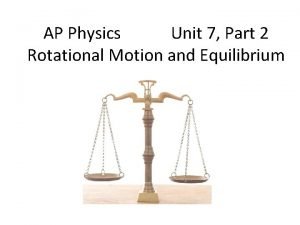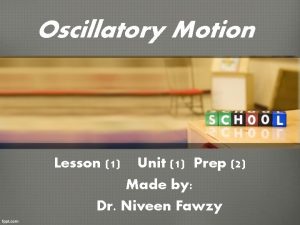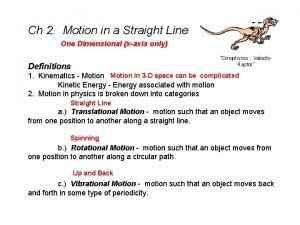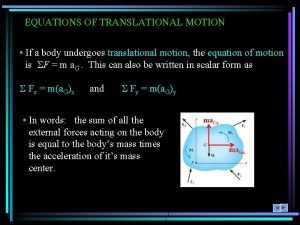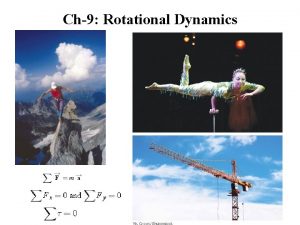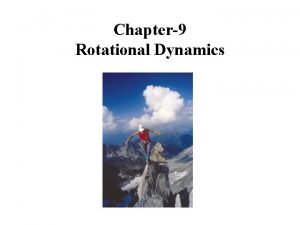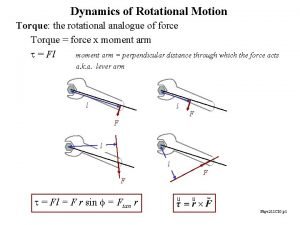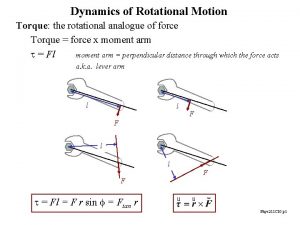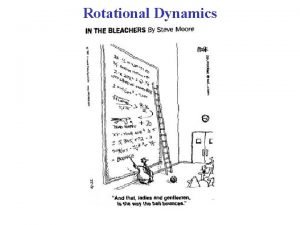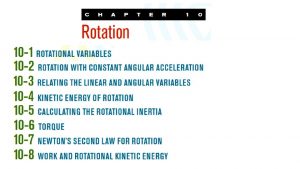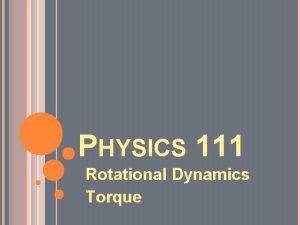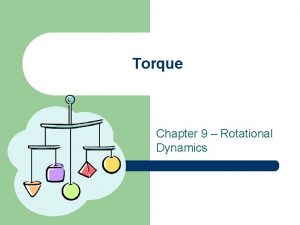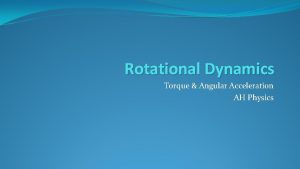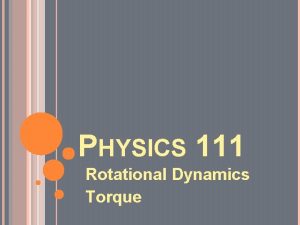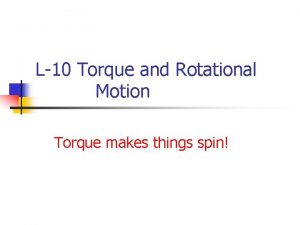Rotational Dynamics i e Torque n Translational motion












- Slides: 12

Rotational Dynamics i. e. “Torque”

n Translational motion n Combined translational and rotational motion

Net force vs. net torque Greater net force causes greater linear acceleration. n Greater net torques cause greater rotational or angular accelerations. n

Torque n Torque depends on the magnitude of the force ¨ the point where the force is applied relative to the axis of rotation ¨ the direction of the force ¨

Calculating Torque = (lever arm) x (magnitude of force) n Unit = N∙m n Direction n ¨ Positive torque causes counterclockwise rotation ¨ Negative torque causes clockwise rotation

Sample Problem n In the three scenarios above, the force applied is 55 N. In (a) lever arm = 0. 80 m (b) lever arm = 0. 60 m (c) lever arm = 0. Find the torque in each case.

Equilibrium n For a rigid body to be in equilibrium, two conditions must be met. ¨ Linear motion cannot change n therefore ΣFx = 0 and ΣFy = 0 ¨ Rotational motion cannot change n therefore Στ = 0 n “A rigid body is in equilibrium of it has zero translation acceleration and zero angular acceleration. ”

Sample Problem n In the figure, an 8. 0 m ladder of weight 355 N leans against a smooth vertical wall. The term “smooth” means that the wall can only exert a normal force and not a frictional force. A firefighter, whose weight is 875 N, stands 6. 30 m from the bottom of the ladder. Assume the ladder’s weight acts at the center and neglect the hose’s weight. Find the forces that the wall and the ground exert on the ladder.

Sample Problem n A bodybuilder holds a dumbbell of weight Wd as shown in the picture. The deltoid muscle is assumed to be the only muscle acting and is attached to the arm as shown. The maximum force that the deltoid muscle can supply is 1840 N. What is the weight of the heaviest dumbbell that can be held? What are the horizontal and vertical components of the force from the shoulder joint?

Center of gravity n The center of gravity (cg) of a rigid body is the point at which its weight can be considered to act when calculating the torque due to the weight. ¨ For a symmetric shape the cg is located at the geometric center. ¨ For a nonsymmetrical shape, the cg can be found by a simple calculation.

Calculating center of gravity

Sample Problem n Find the center of gravity of the arm if the upper arm has a weight of 17 N, the lower arm has a weight of 11 N, and the hand has a weight of 4. 2 N.
 Translational vs rotational motion
Translational vs rotational motion Analogy between linear and rotational motion
Analogy between linear and rotational motion Symbol for angular acceleration
Symbol for angular acceleration Second condition of equilibrium
Second condition of equilibrium Torque free body diagram
Torque free body diagram Physics equations quiz
Physics equations quiz Torque rotational motion
Torque rotational motion Rotational inertia and torque
Rotational inertia and torque Translational motion
Translational motion Acceleration vector projectile motion
Acceleration vector projectile motion Translational motion definition
Translational motion definition Rolling without slipping
Rolling without slipping Translational motion equations
Translational motion equations
